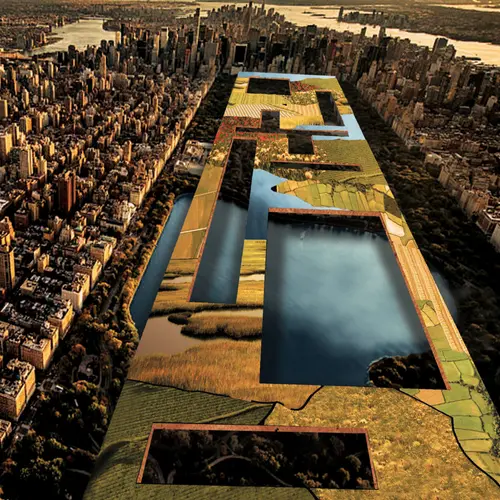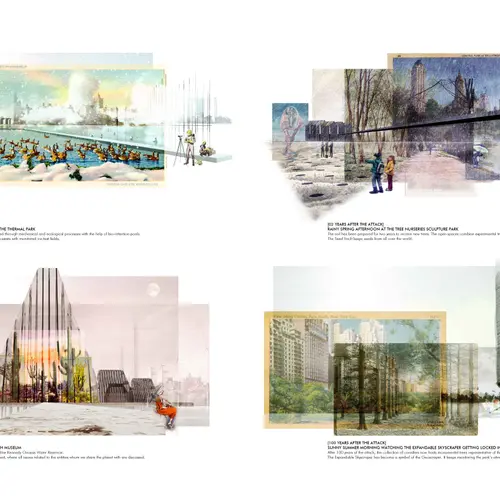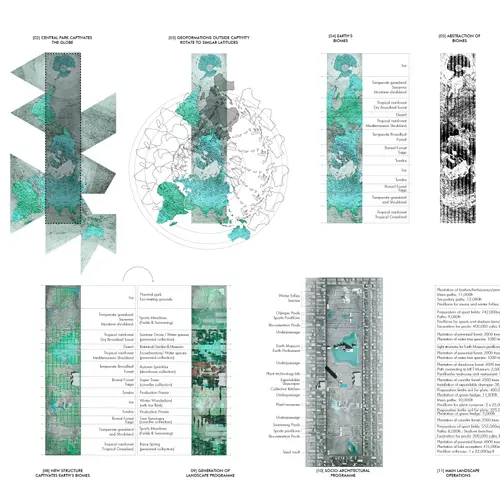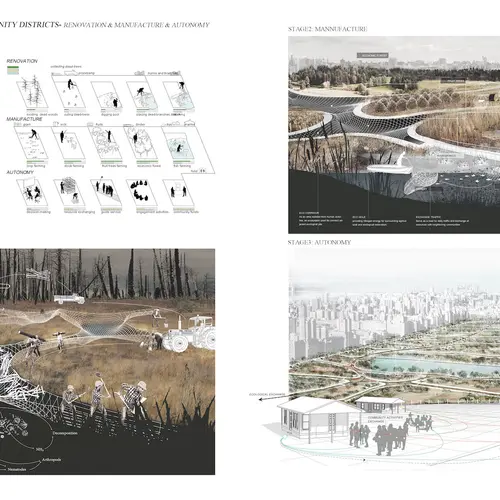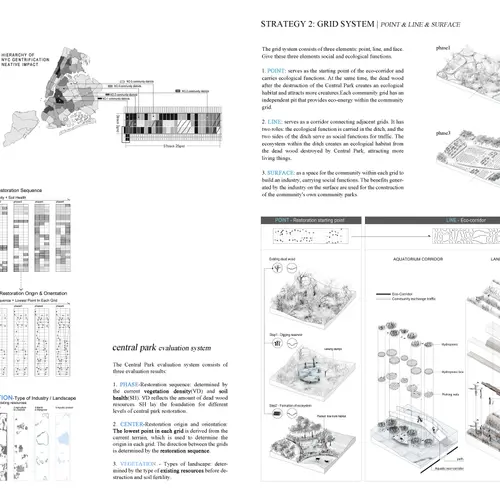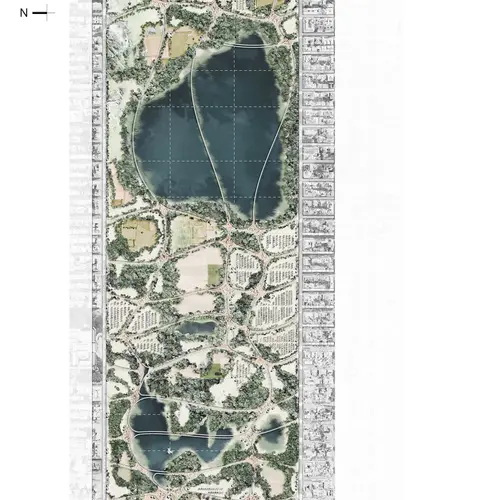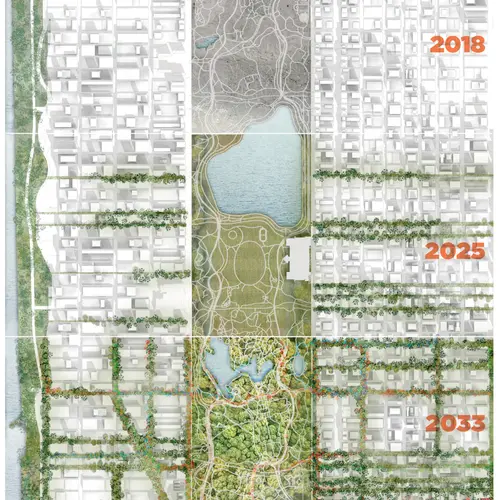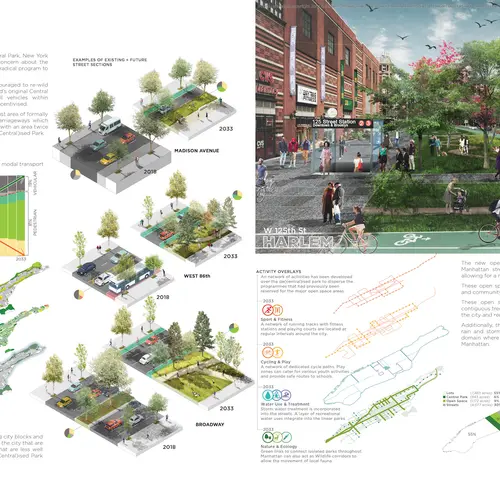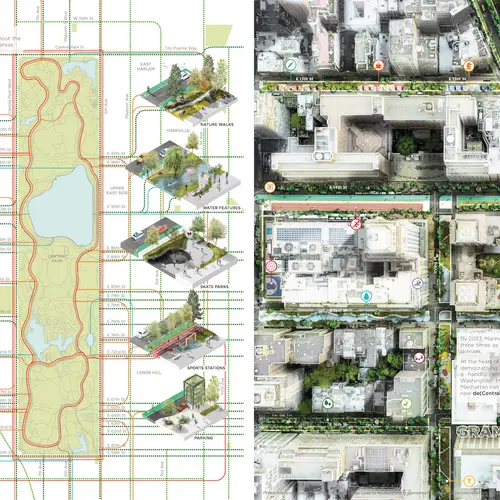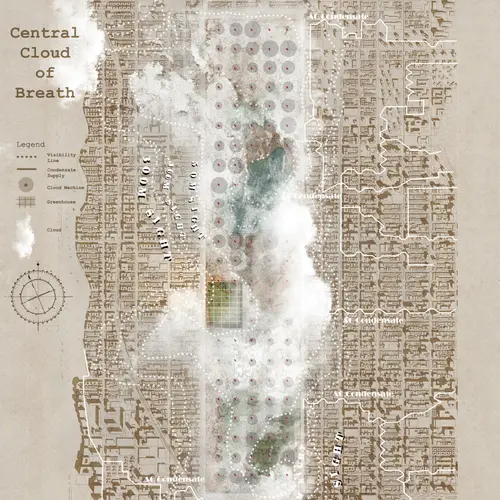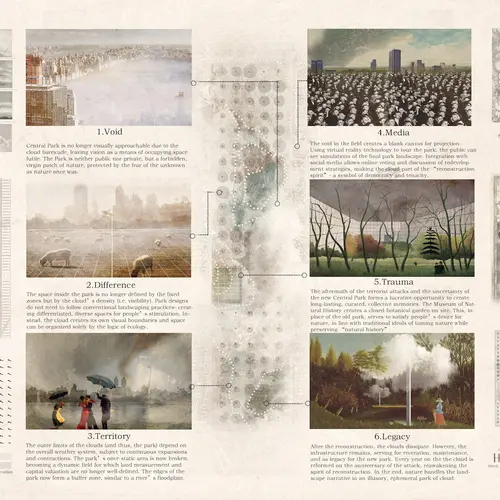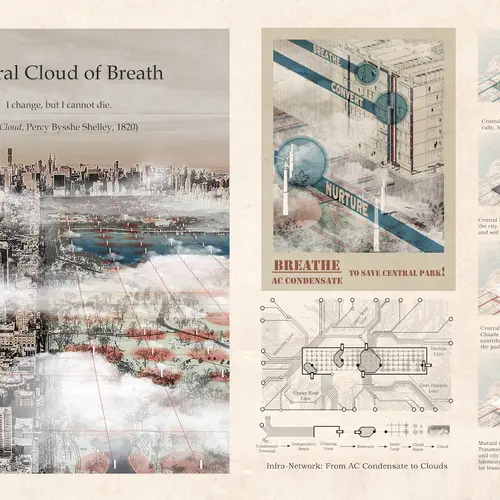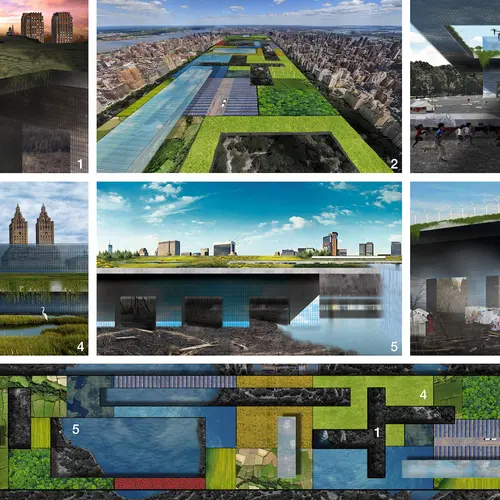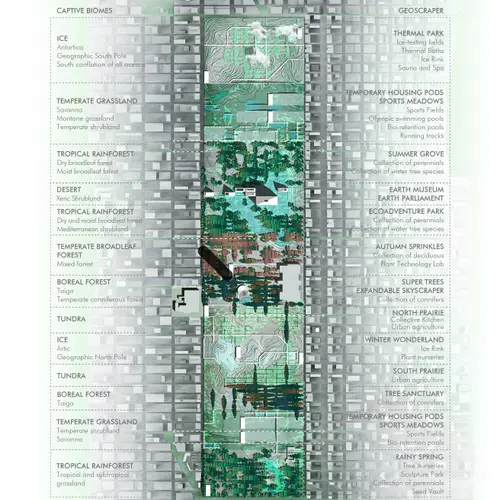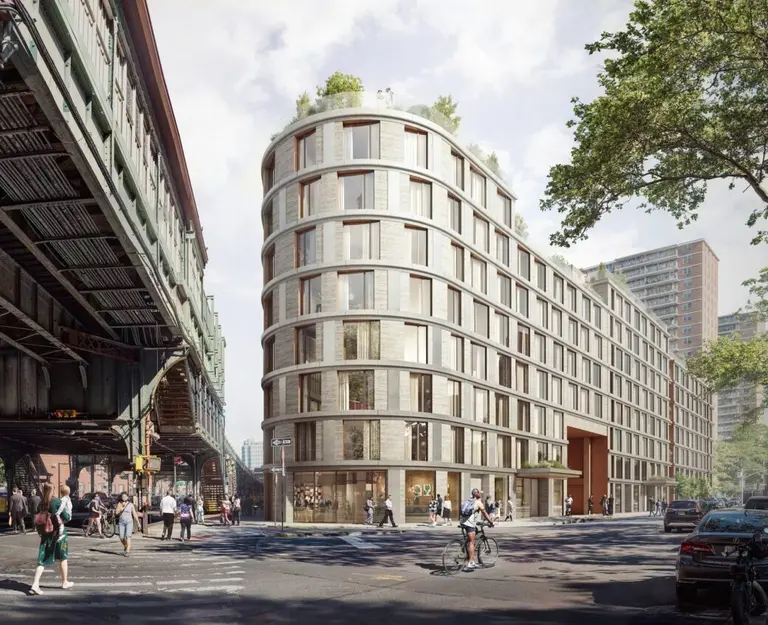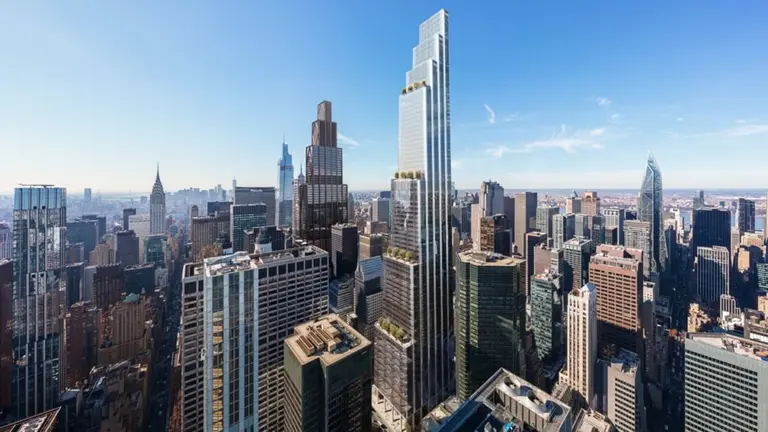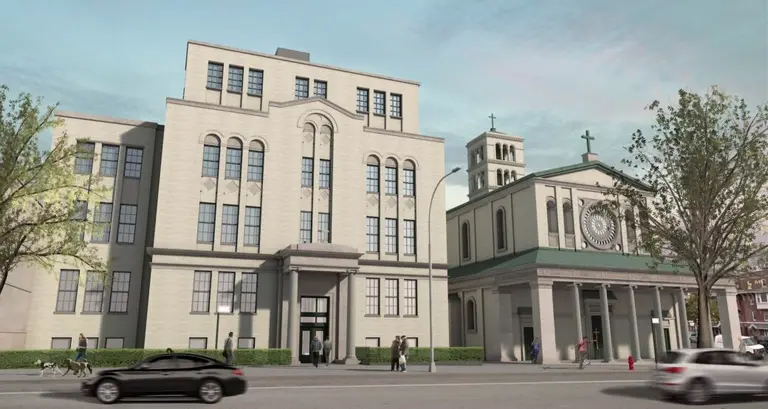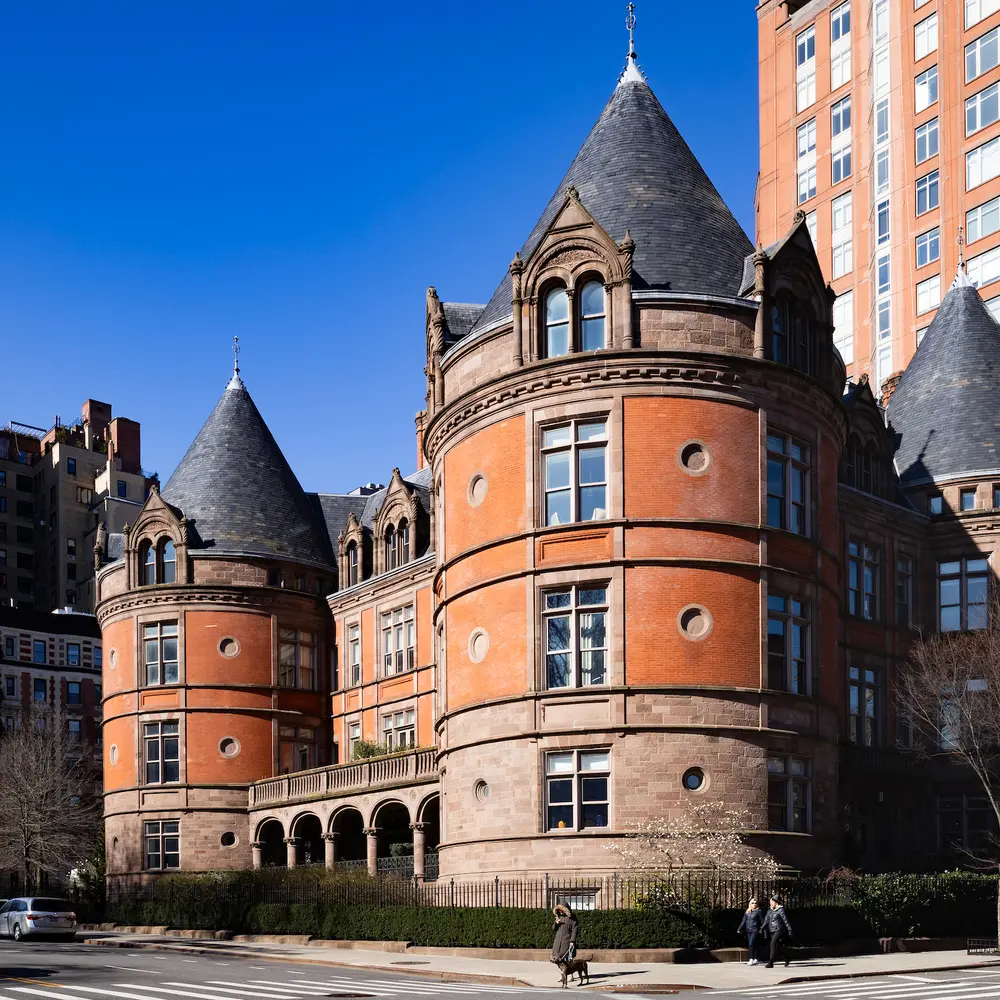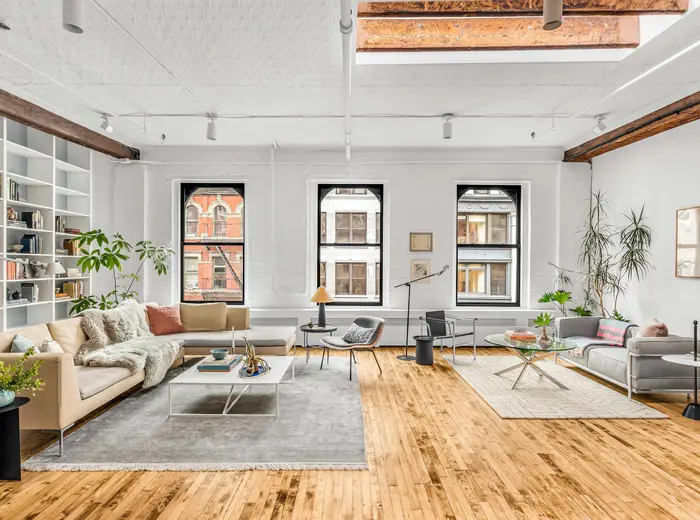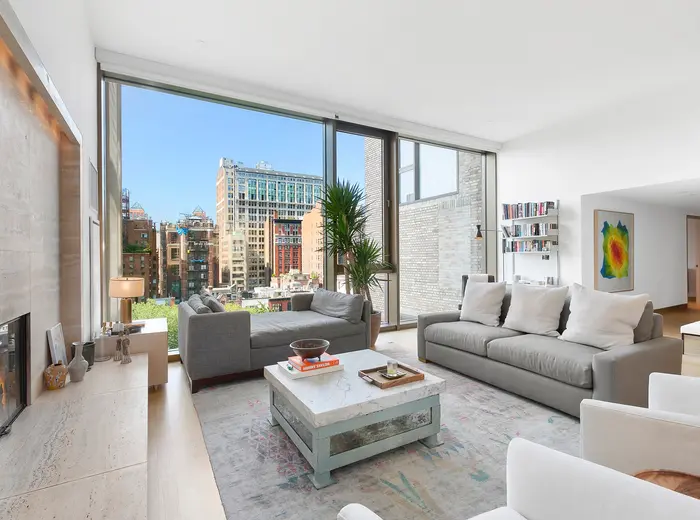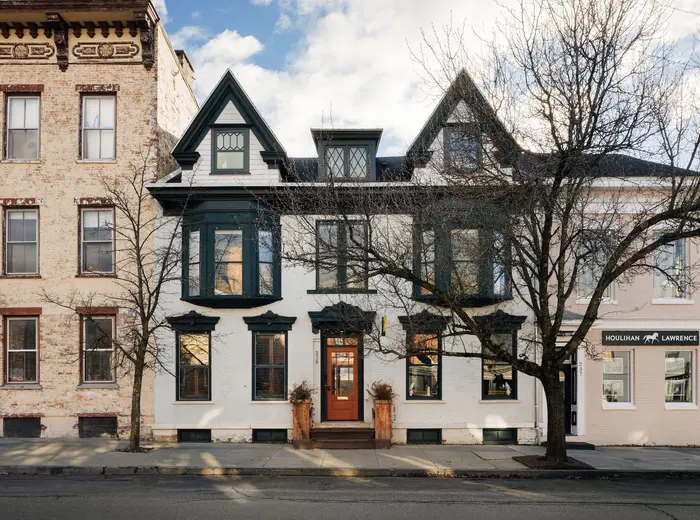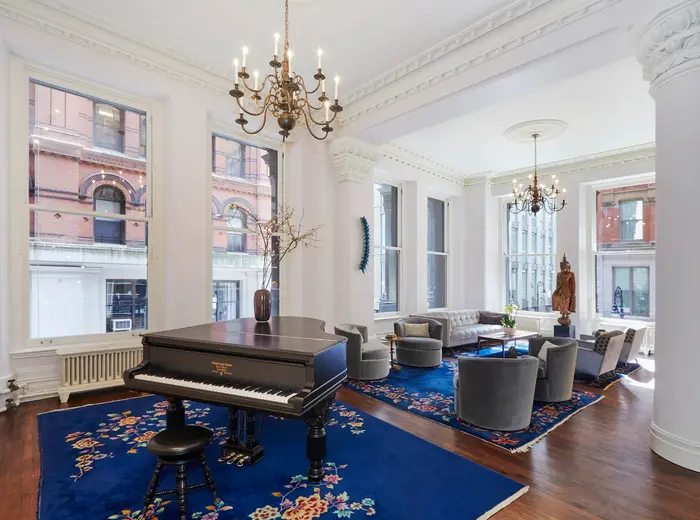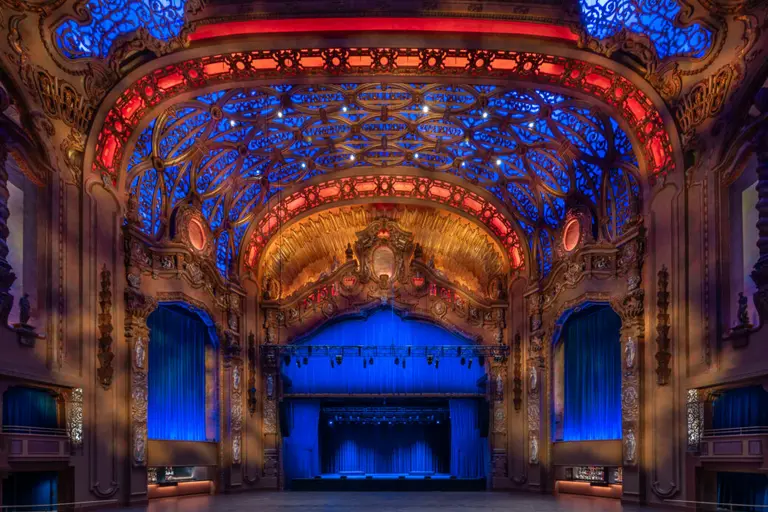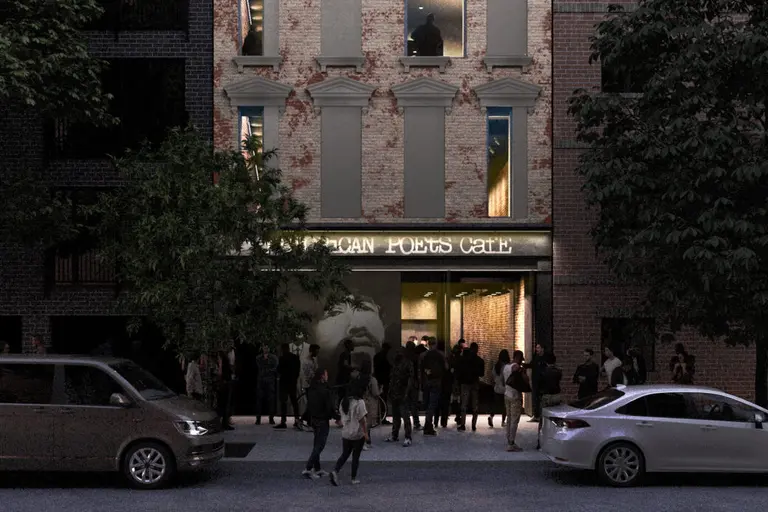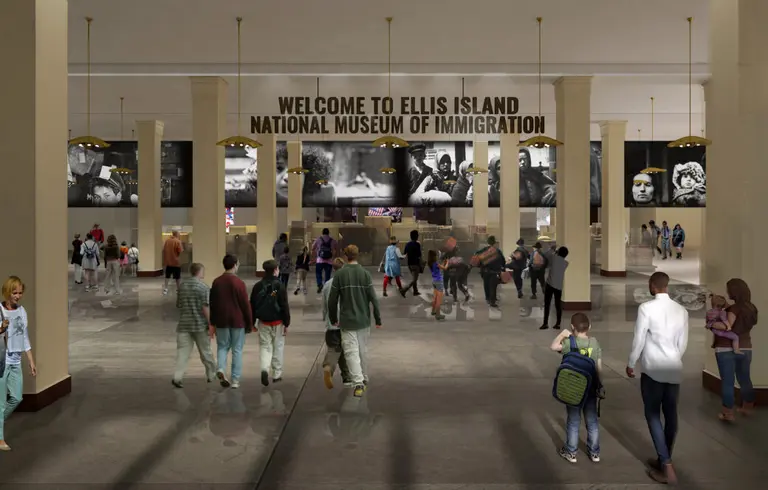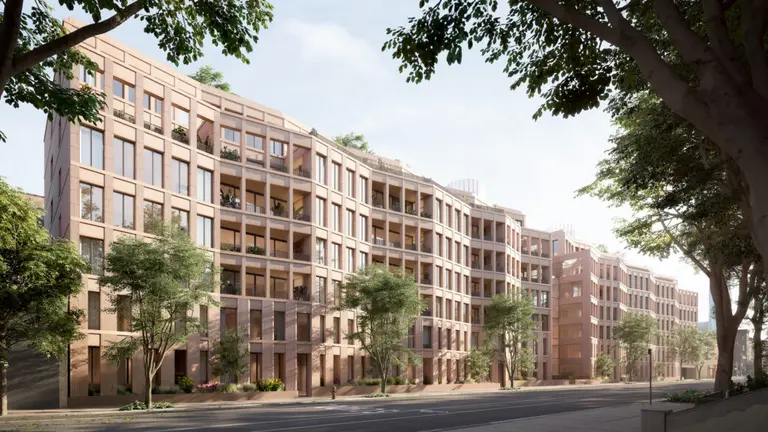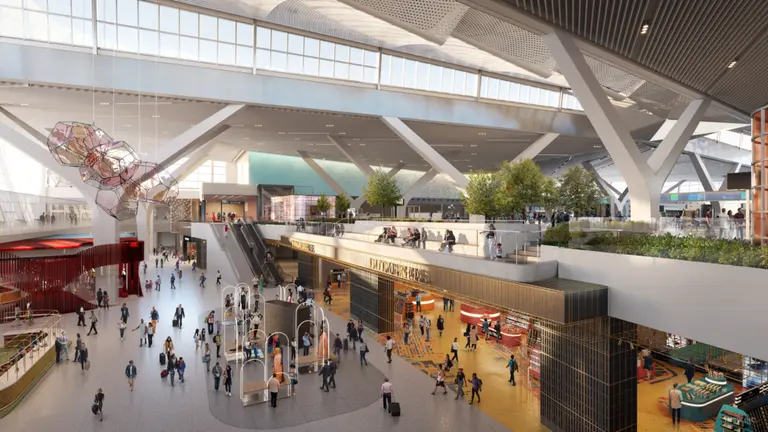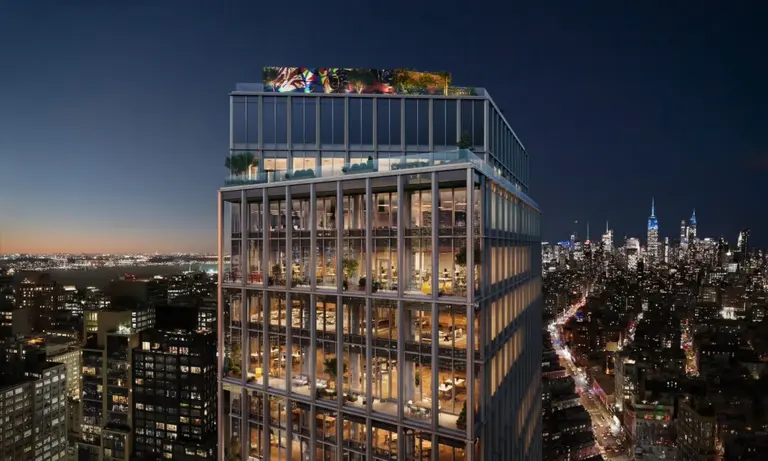See Central Park reimagined after being devastated by a fictional eco-terrorist attack
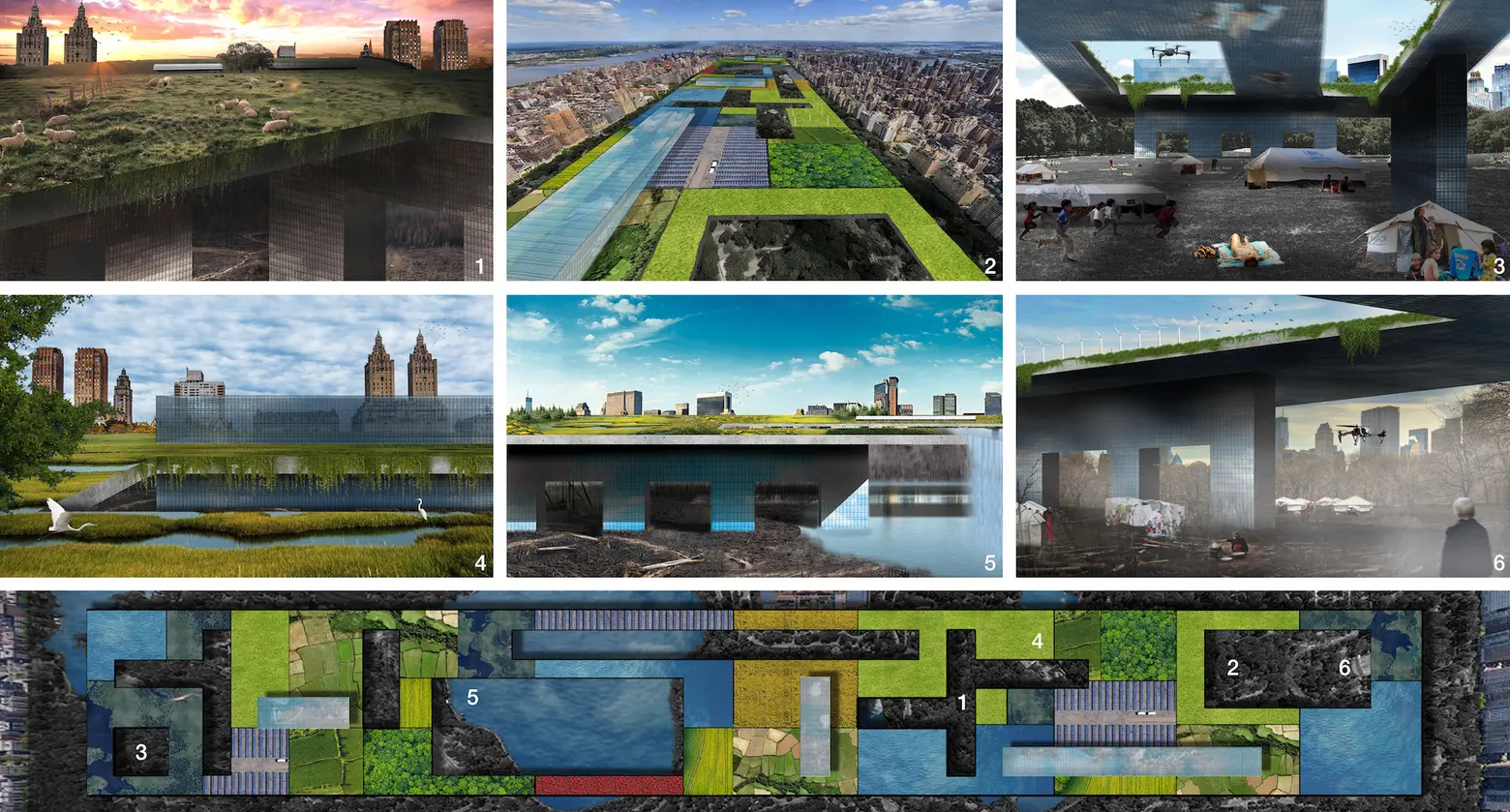
Mannahatta Plateau for Frederick Law Olmsted via John Beckmann, Hannah LaSota, Laeticia Hervy
The University of Pennsylvania announced this week five winners of its ICONOCLAST competition, a design contest that asked participants to reimagine Central Park following a hypothetical eco-terrorist attack (h/t NY Times). The contest attracted 382 entries from 30 countries, all competing for $20,000 and the chance to be published in LA+ Journal. Richard Weller, a jury chair for the contest, said, “From megastructures to new ecologies and radical ideas for democratizing public space, the LA+ICONOCLAST winning entries can move beyond the status quo of picturesque large parks and embrace the challenges and opportunities of the 21st century.” Ahead, check out the designs of a recreated 21st-century Central Park from the five finalists.
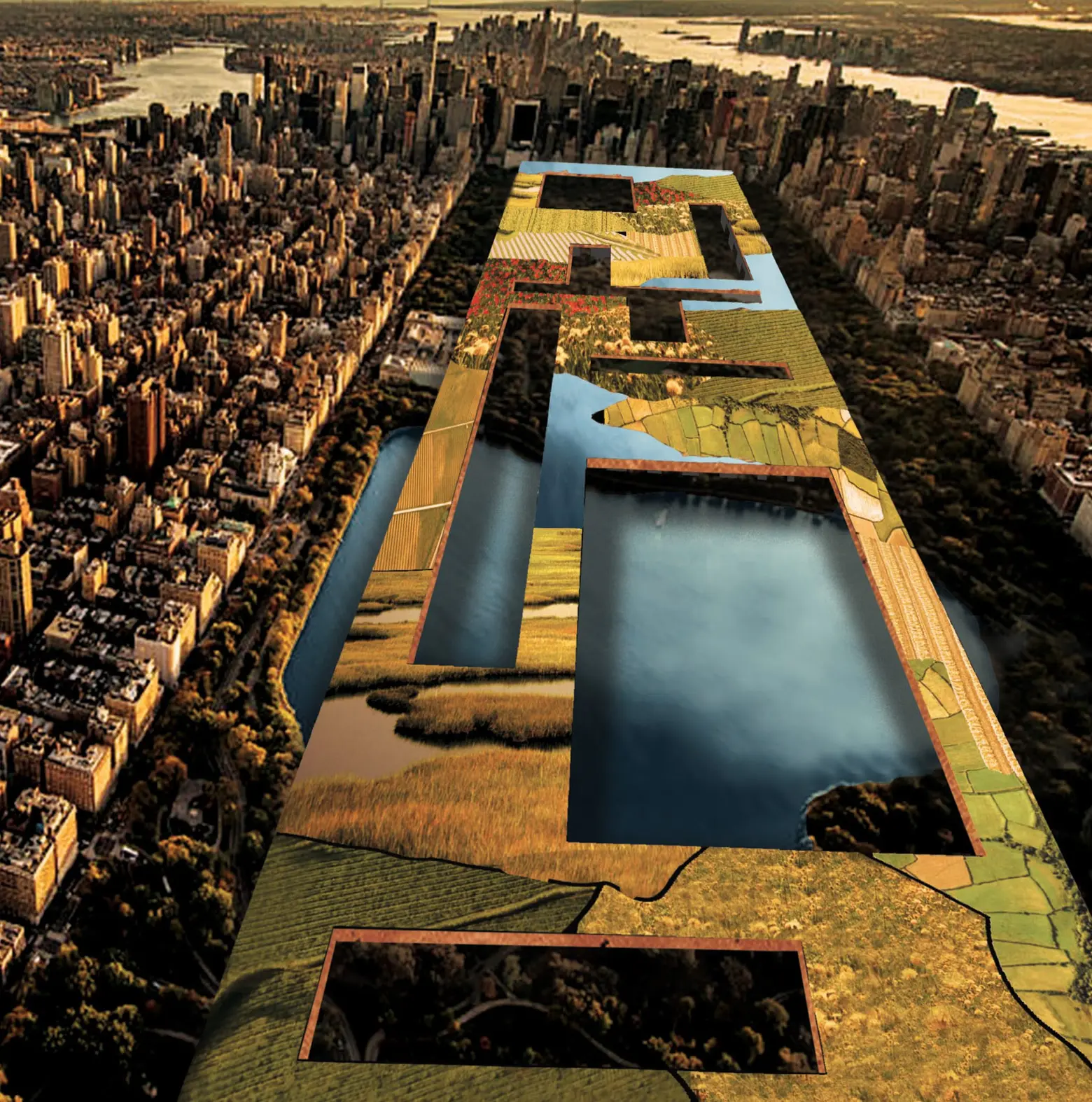
Mannahatta Plateau for Frederick Law Olmsted: A Re-enchantment for a Post-Apocalyptic Ecology
By: John Beckmann, Hannah LaSota, Laeticia Hervy
This design proposal suggests building a plateau of raised parkland over the original surface of Central Park. The structure would be 200 feet high, modeling itself after the lines and scale of the typical Manhattan building lot. According to the team, “the street grid is celebrated by being projected across the park’s surface, yet the rigid geometry of urban forms is broken down into subsections defined by the flowing lines of nature.” Supporting buildings made of glass will direct sunlight into the space, “blurring the distinction between nature and architecture.”
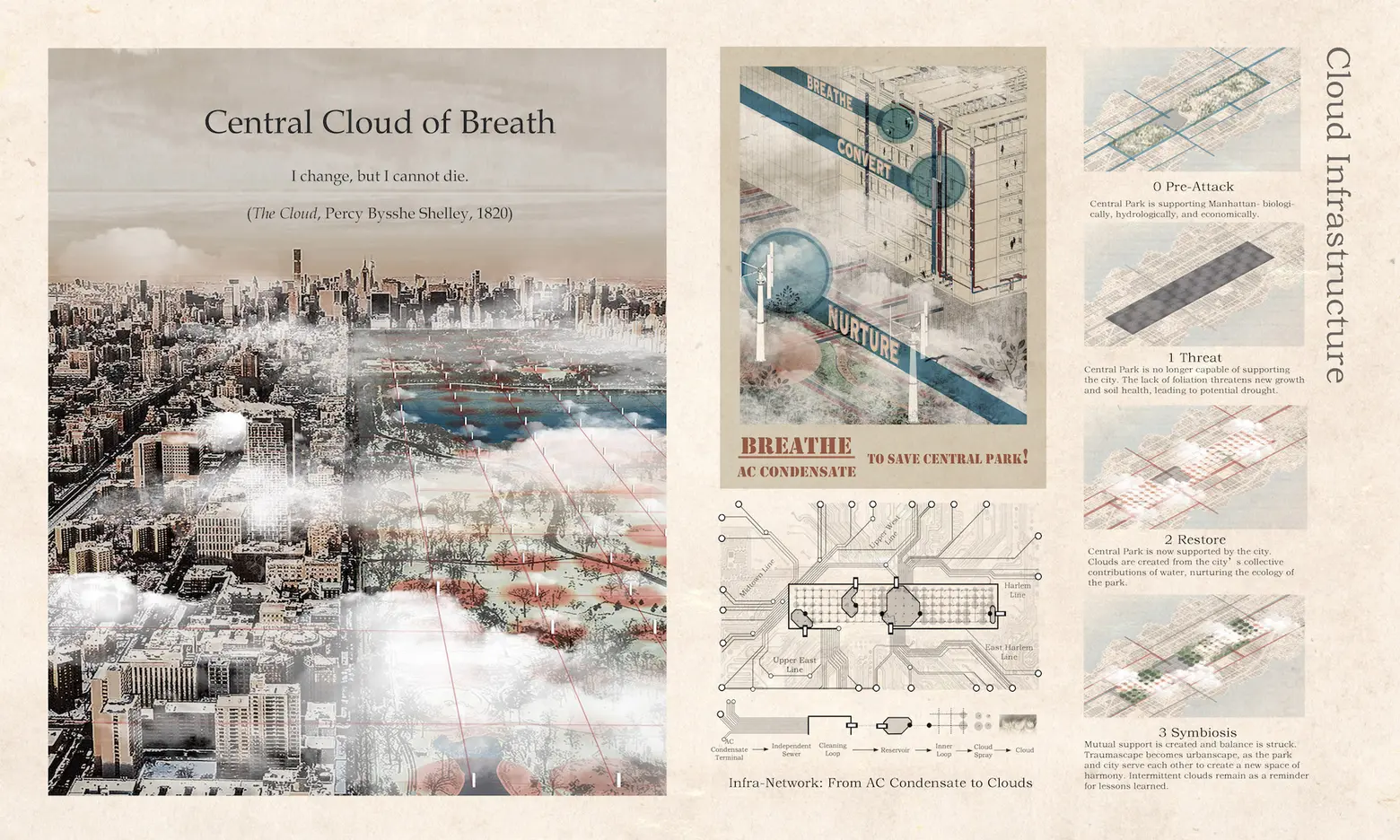
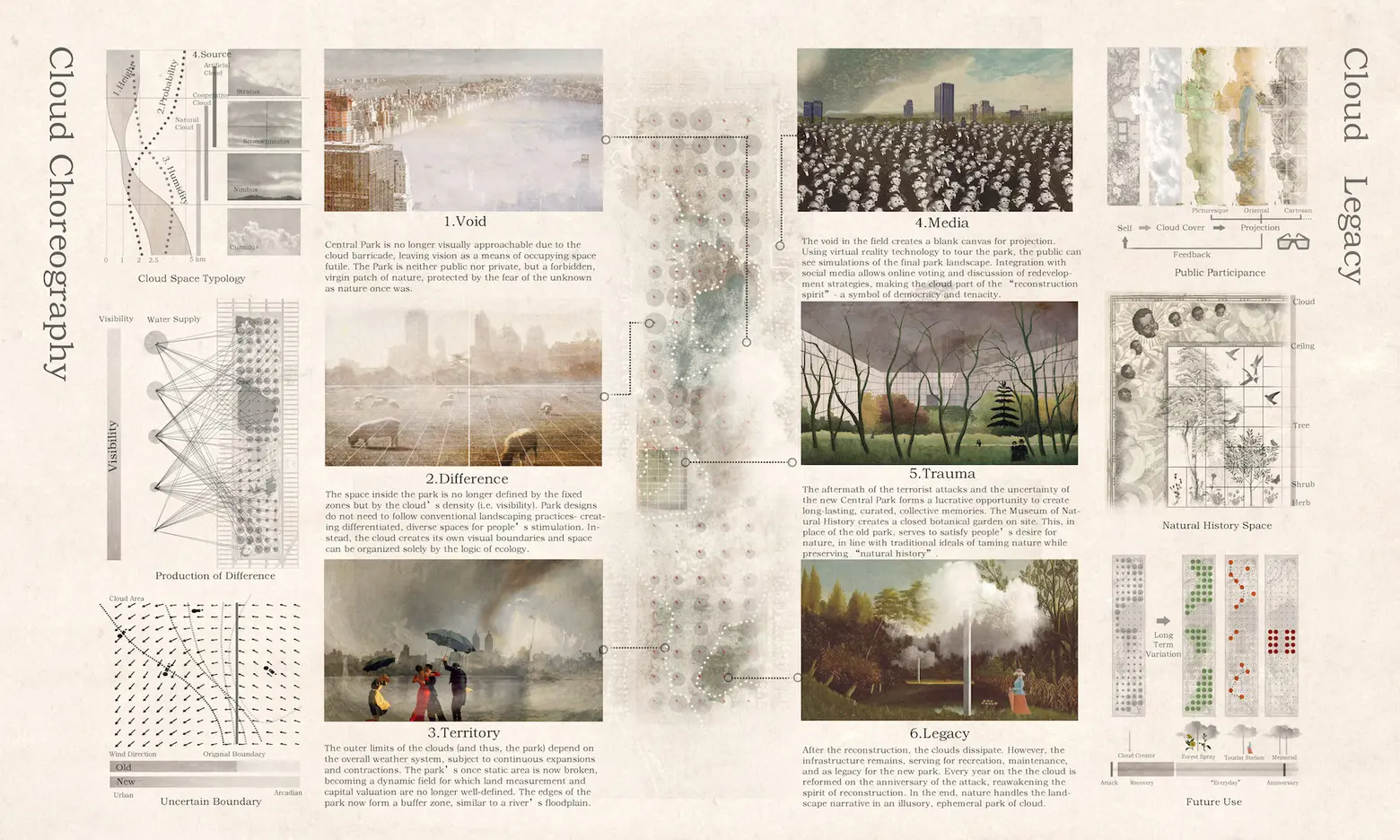
Central Cloud of Breath
By: Chuanfei Yu, Jiaqi Wang, Huiwen Shi
According to the team behind “Central Cloud of Breath,” the best way to rebuild the park space after the terrorist attack is to restore cloud space. As a short-term plan, the design creates a layer of cloud over the park that would decrease the evaporation of water and protect the ecosystem’s reconstruction. Water from the plan would come from the AC condensate of Manhattan office buildings, or the water vapor exhaled by people, allowing every New Yorker to be a “part of the great ‘Breathe to Save Central Park’ plan.”
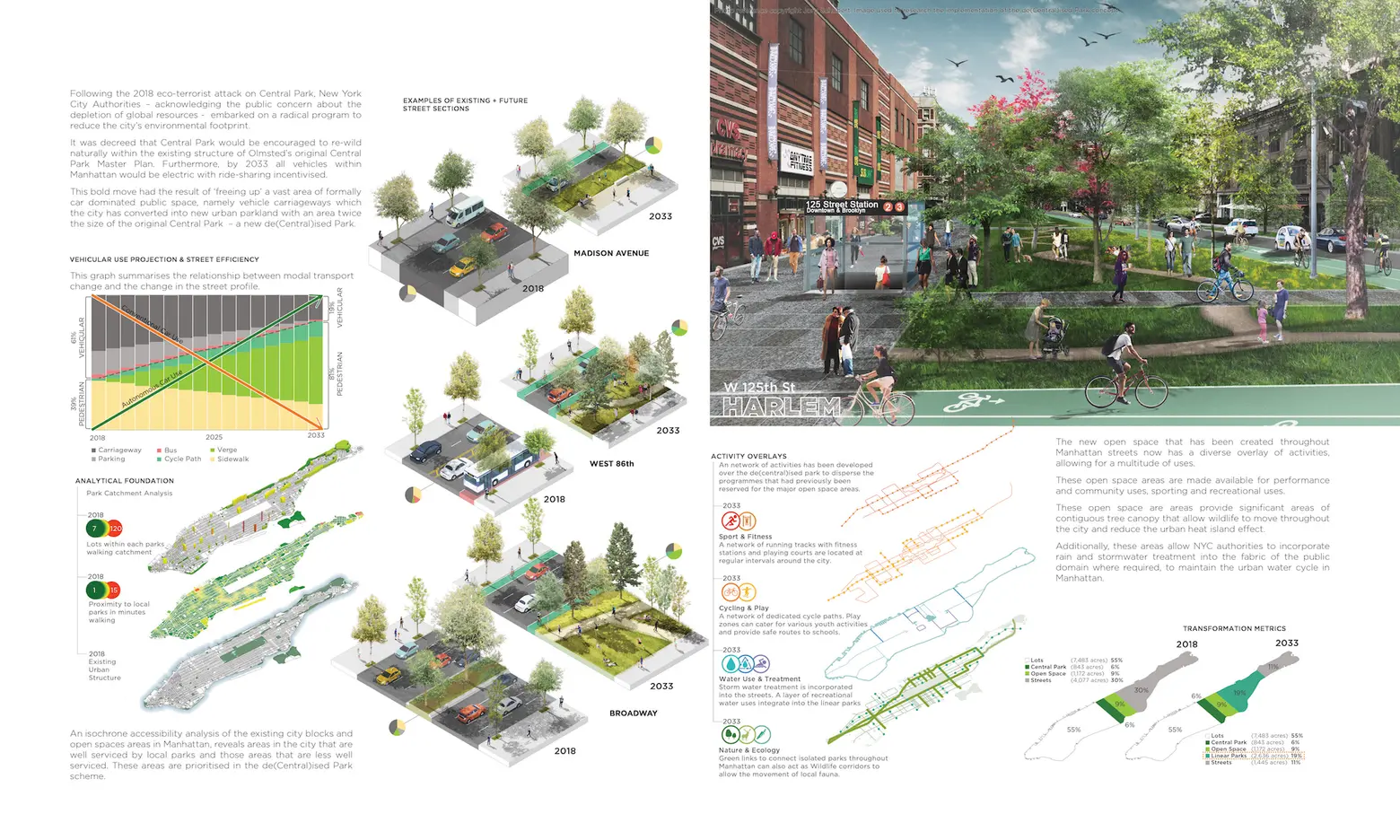
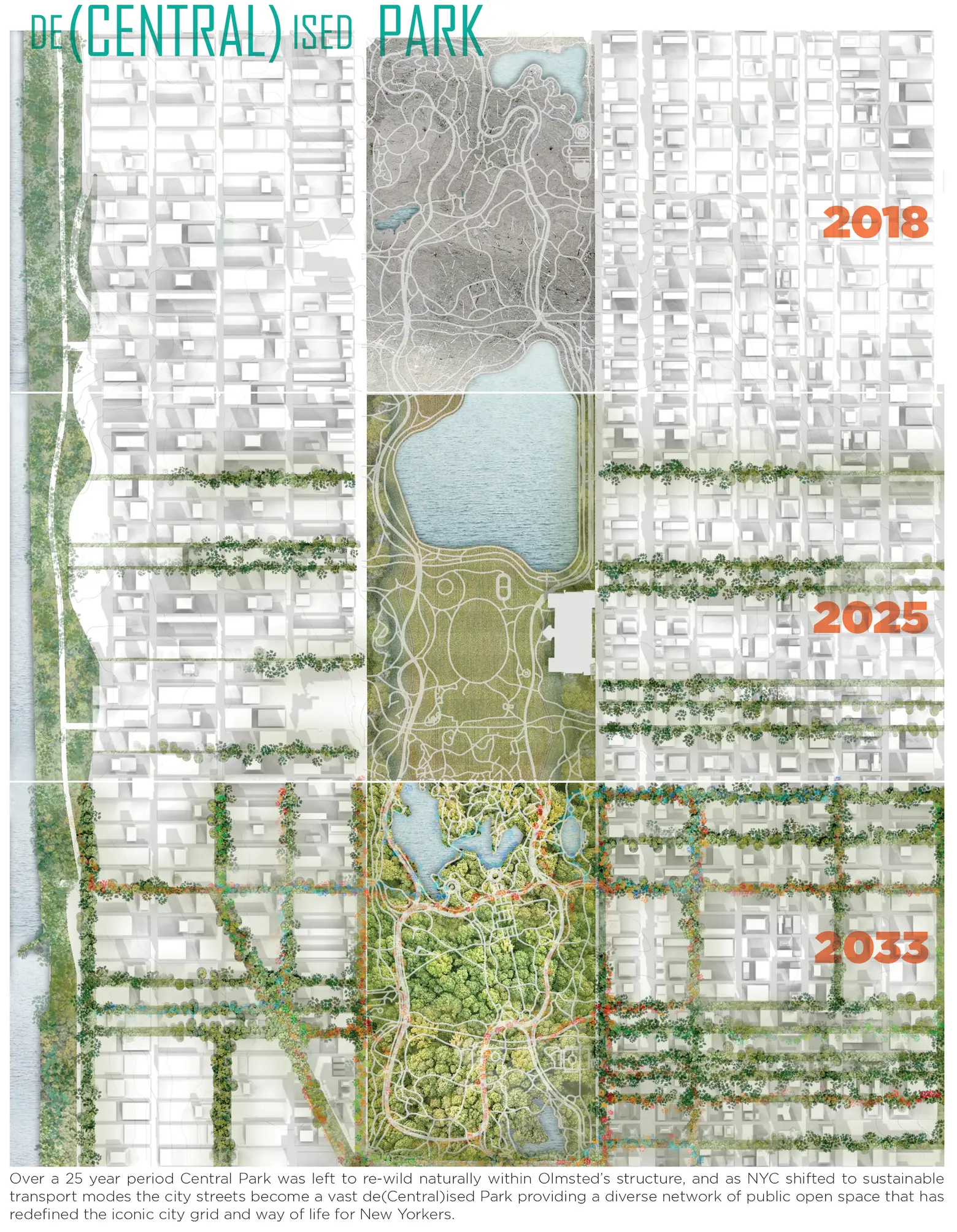
De(Central)ized Park
By: Joe Rowling, Nick McLeod, Javier Arcila
The “De(Central)ized Park” design considers the impact of reducing the city’s environmental footprint. According to the design team, the city, in the wake of the attack, decided to return Central Park to its natural state within the existing masterplan of Olmsted. As the city shifts to electric vehicles and ride-shares, the city streets would become part of the open space. The entry claims that in 25 years, 75 percent of Manhattan streets would experience fewer roadways, more bike paths, and “new diverse open space ribbons and dwelling spaces radiating out across New York City.”
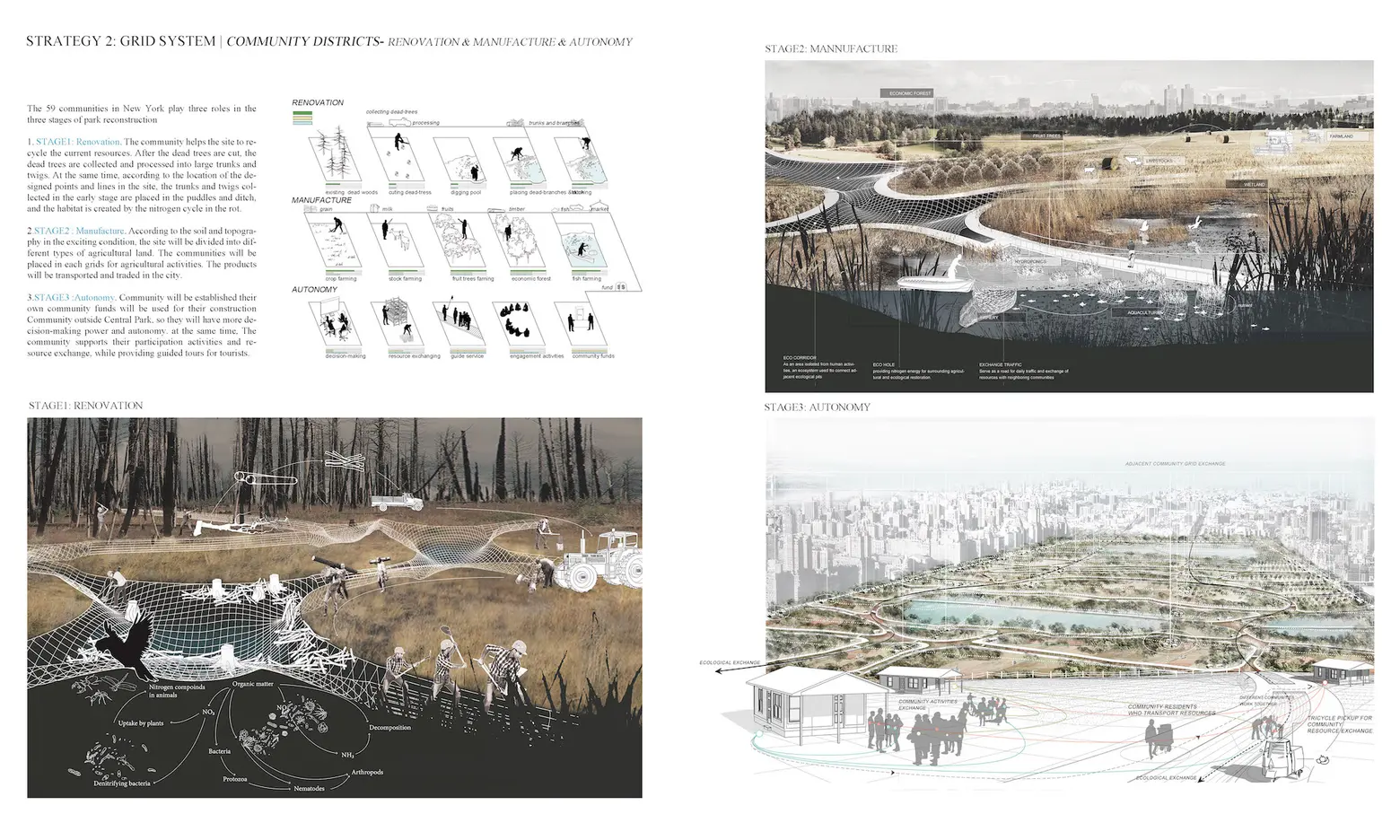
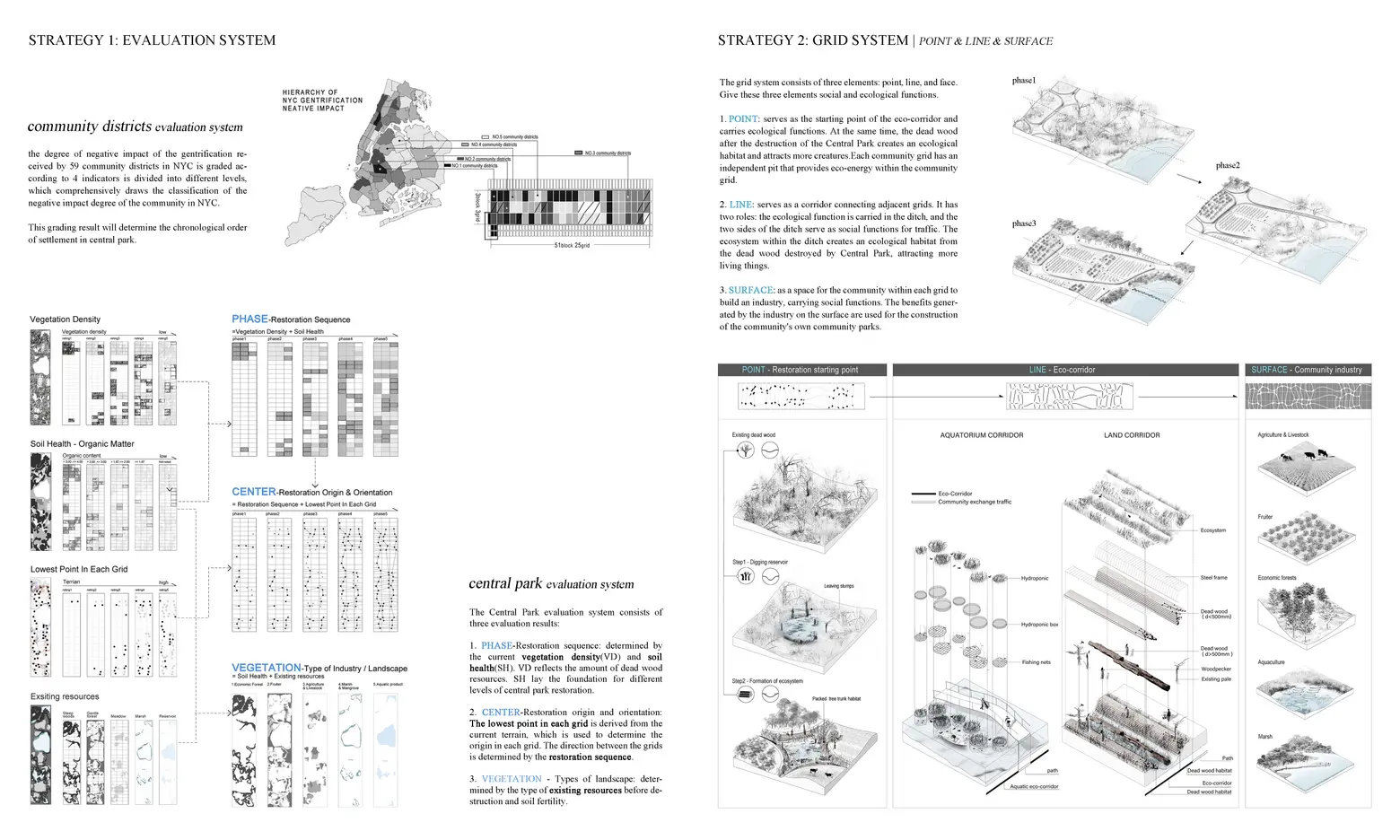
Linking Central Park with 59 New York Communities
By: Song Zhang and Minzhi Lin
This design tackles the idea of eco-gentrification caused by environmental inequities, a major problem in New York, according to Zhang and Lin. According to the team, there is an uneven distribution of green space construction funds and a “mismatch between residents’ income and expenditure on public space.” They propose linking Central Park with 59 communities in the city, giving these localities funds raised through park activities that would allow them to improve green spaces of their own.
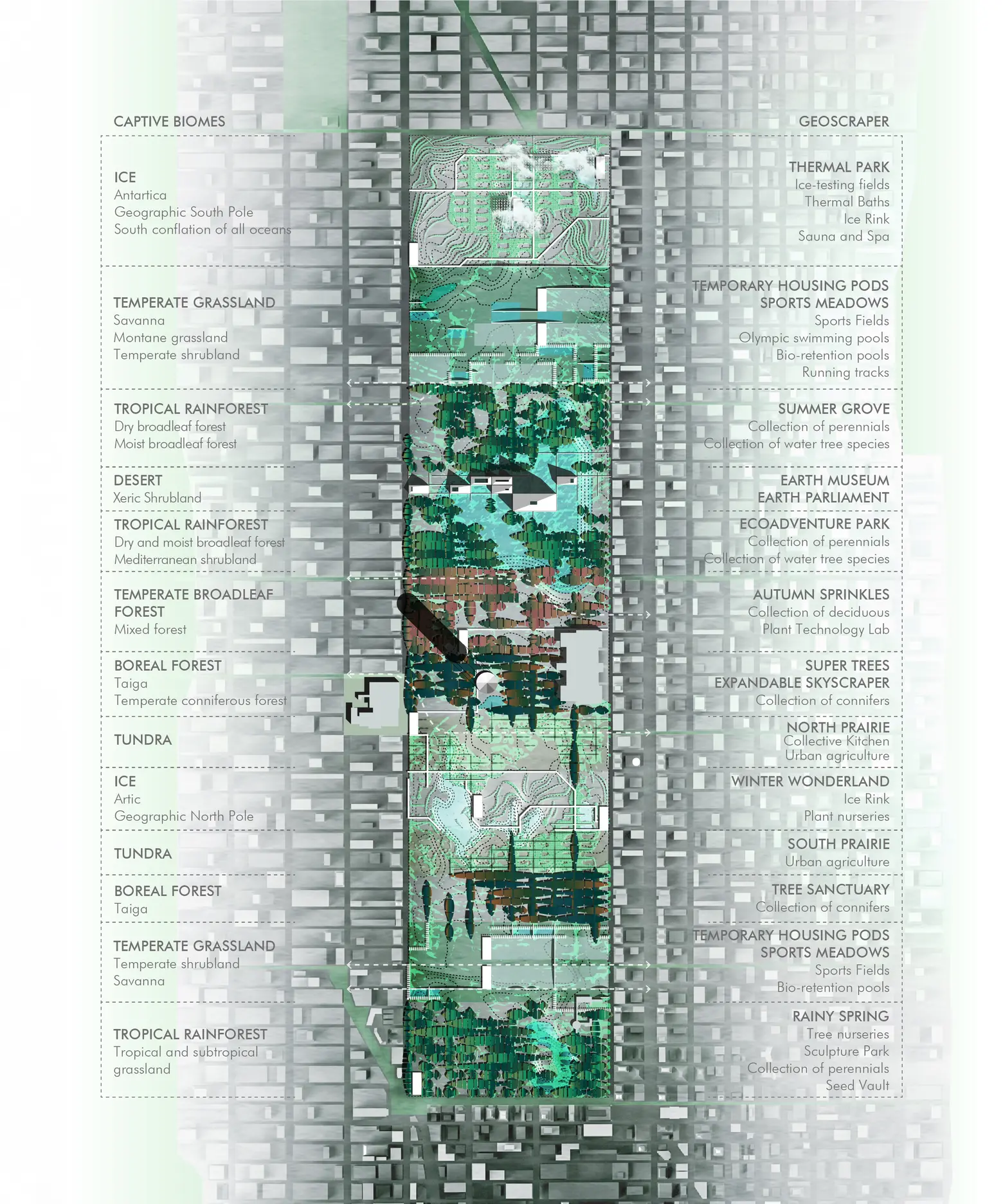
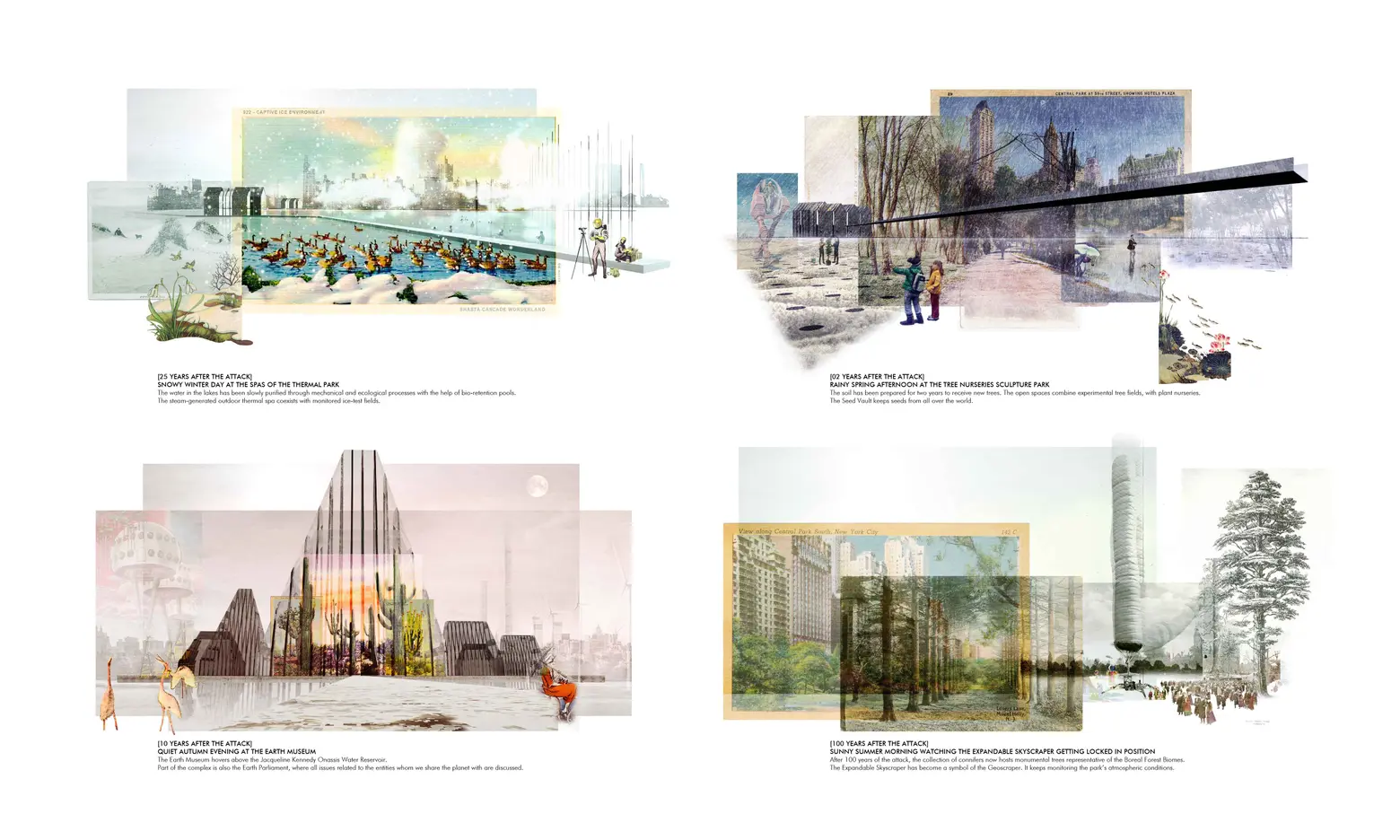 The Geoscraper of the Captive Biomes
The Geoscraper of the Captive Biomes
By: Tiago Torres-Campos
After the vegetation of Central Park was wiped out, the “Geoscraper” was created. According to Torres-Campos, the designated landscape architected decided to move away from the designs of the original park and create a landscape that acted as a horizontal skyscraper.
Learn more about the design entries and view the honorable mentions here.
[Via NY Times]
RELATED:
